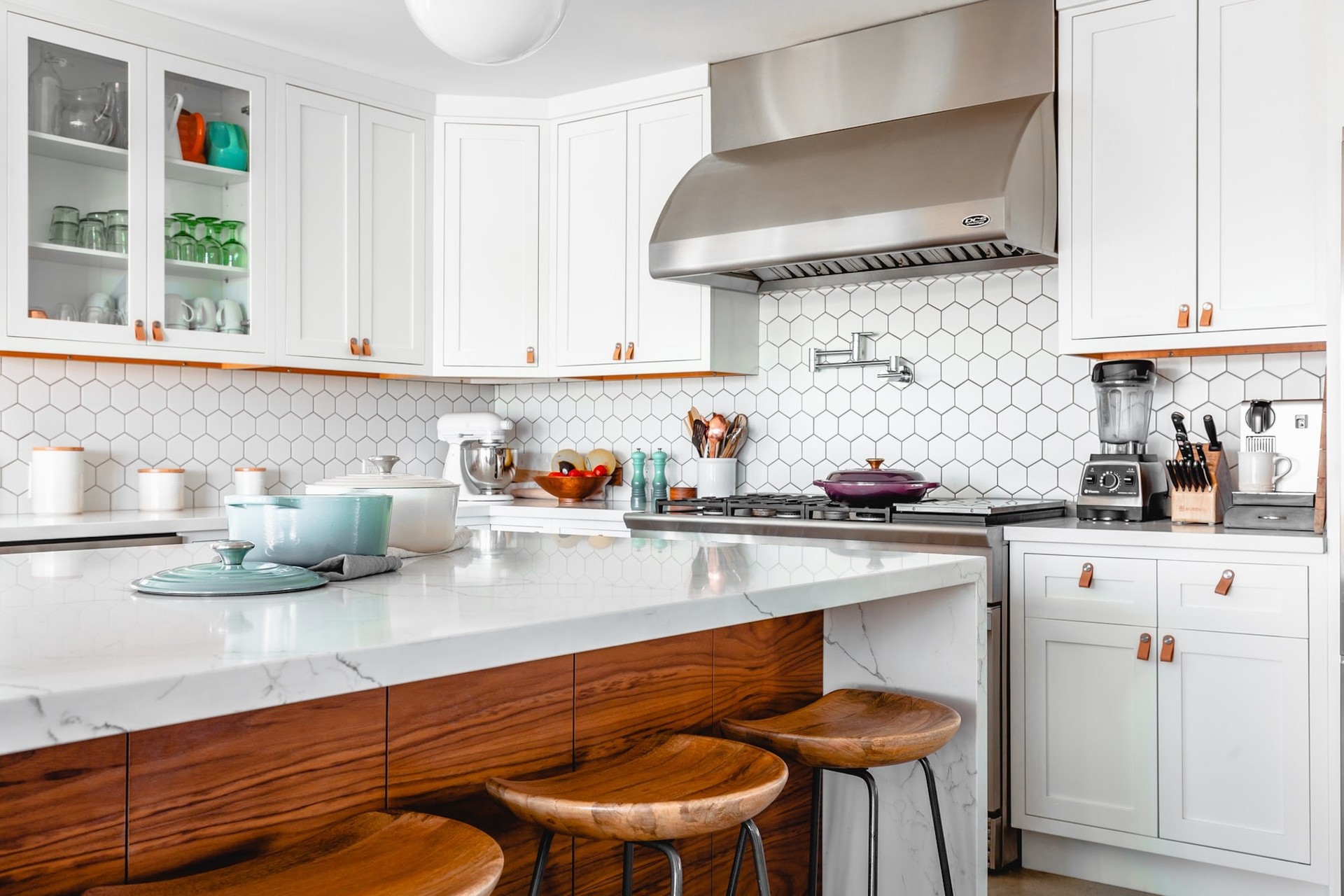Buying a home is an exciting time. Looking at real estate, checking out neighbourhoods, and decorating ideas. But… Then comes along the finance piece. Verifying your income, sorting out paperwork, and having a lender go through your expenses with a fine-toothed comb.
It can feel a bit invasive! But there’s is a good reason why lenders make you go through this. And it can be a good opportunity for you to get real about your finances and take charge.
Having all the information on hand can make the living expenses declaration process feel like less of an intrusive shock. And that’s what we’ll provide in this article.
If you’re an Australian home buyer looking for a breakdown of what living expenses you’ll be expected to declare, then read on. Get all the information you’ll need to have the confidence that being fully prepared can give you.
Why Do I Need To Provide A Comprehensive List of My Living Expenses?
There was a dark time in the not-so-distant financial past when banks gave out home loans a bit more easily. What could go wrong?
Well, there were throngs of people given loan amounts they didn’t have a hope in hell of paying. And the world descended into a little thing called the Global Financial Crisis (did you see the film The Big Short?)and the Royal Commission into Banking.
Banks and lenders now have a firm obligation to conduct mortgage business in a responsible way. This is outlined in the National Consumer Credit Protection Act 2009. This protects you, the borrower from the potential downsides of being approved for a loan amount you can’t afford. And it protects the financial system from potentially, well… crashing.
Throw in the 2017-2019 Royal Commission into the conduct of banking and financial services in Australia... And you’ll find that lenders are doubling down on making all the necessary checks required. If you like to see how the Royal Commission put the screws on ANZ Bank for assessing and verifying living expenses, you can see this here on YouTube.
So, when you’re applying for a loan, the lender wants to make sure you can manage your money well and meet your loan repayments. This lowers the risk for you and the lender.
How Can Living Expenses Impact My Home Loan Application?
On top of your income, credit score, debts, and assets and equity, lenders will want to see a comprehensive list of your living expenses. This shows them a few things:
- How responsible you are with your money? Are you spending all your money frivolously? Are you spending on high risk categories such as gambling? If so, they’ll see you as a a greater risk.
- How likely you are to make repayments on a home loan? After living expenses and debt obligations, how much of your monthly income is left to make repayments?
- How much can they responsibly lend to you? What is an ethical loan amount for you to comfortably make mortgage repayments and maintain a healthy standard of living?
How you spend your money in relation to your income paints a picture of your financial situation. The healthier your financial situation is, and the more responsible you look... The more likely you’ll receive approval for your home loan application. And the better your borrowing power will be.
How Will My Living Expenses Be Calculated?
Here are the methods that lenders will use to verify and cross-check your expenses. Lenders will commonly use one or a combination of these to make their assessments.
- A self-assessment of the decalred living expenses on your application form.
- 3 months of cheque, savings, and credit card bank statements to verify your self-assessment.
- The Household Expenditure Method (HEM), used as a 'floor' minimum to what they would consider a low limit.
What is HEM?
HEM is the Household Expenditure Measure. This is a method used by lenders as a backup to sense check your expenses on your application.
HEM is drawn up (and kept updated) by the Melbourne Institute, which is a think tank often looking at social policy. HEM is one of the 'Social Indicators' reports they produce. In the HEM report, they look at the cost of 600 common household items (say, milk, chicken, petrol, shoes, tomatoes, electricity, nappies!) and arrive at an estimate of what it would cost to live a modest life. This data can be explored at the postcode level because cities often cost more than other locations.
In the bank assessment context, it provides a hard floor under which any expenses will be viewed as 'too low' and 'this does not look right'.
For example:
- A couple with two children declaring expenses of $2,355 per month would be too low, and under the HEM sense check.
- A couple with two children declaring expenses of $5,200 per month would look more accurate.
Lenders will take into account your current situation, i.e. if you’re single, have a partner, how many dependents you have, etc... Your annual spend amount will be put into the following applicable lifestyle brackets: student, basic, moderate, and lavish.
Lenders will assess the following spending categories:
- Absolute basics - What you need for everyday living, such as food, transport, utilities, and clothing.
- Discretionary basics - Non-essential items that tend to make life a little more enjoyable, such as dining out, entertainment, recreational activities, and alcohol.
Some lenders will include an additional category, depending on their policies:
- Non-basics - Luxury items and activities that are not a part of regular spending, such as overseas holidays.
In recent years, the HEM has sparked controversy and was investigated in the recent Royal Commission into Banking and Financial Services. Critics of this method outline its failure to account for all spending. The following are examples of costs not included in HEM calculations:
- Rent and mortgage payments.
- Private school fees.
- Loan repayments.
- HECS-HELP loans.
- Life and personal accident insurance.
- Superannuation.
- Child support.
Because of this, borrowers could potentially be given loans based on an underestimation of their expenses. This miscalculation could put a borrower at financial risk, which goes against the National Consumer Credit Protection Act 2009.
For these reasons, some lenders are shying away from HEM, or using it in conjunction with other living expense calculation methods.
What Living Expense Categories Will Be Assessed?
To help you prepare for the home loan application process, here is a list of living expense categories and examples. Lenders will want to see a comprehensive list of your recurring expenses.
- Food - Groceries, takeaway meals, your daily coffee and lunch run at the office.
- Rent - This includes board and lodging payments.
- House and Utilities - Electricity, water, gas, council rates, cleaning, maintenance, investment property expenses.
- Communication and Media - Internet, subscriptions such as Netflix and Spotify, phone bills.
- Insurance - All insurance policies you have, such as house and contents, private health, car, life, and landlord insurance.
- Transport - Car expenses such as registration, maintenance, petrol. Public transport, Uber rides, taxi trips, and tolls are included here.
- Medical, Health, and Fitness - Doctors visits, gym memberships, physio, prescription medicines, dental exams.
- Recreation - Travel, movies, concerts, restaurants, sports.
- Dependents and Pets - Childcare, swimming and music lessons, doggy daycare, vet bills.
- Education - Textbooks, uniforms, tuition, private school fees, university fees.
- Personal Care - Haircuts, clothing, shoes, make-up and beauty supplies, beauty treatments, and services.
- Any other regular expenses you have that are not covered by the above categories.
- YouBroker has been designed to make this easy, as our online expense form auto-completes your actual expenses (extracted from your bank account) for you to take a look over. Build out your very own YouBroker profile, this will help you check over your expenses more easily.
How Can I Improve My Chances To Qualify For A Home Loan?
In the lead-up to applying for a home loan, it’s a good idea to have a good look at your household budget. Scan your bank statements. Are there any unnecessary purchases you can cut?
Being able to prove you’re in good financial health can potentially open you up to:
- a lower interest rate.
- more borrowing capacity.
- more options when it comes to home loan products.
This is of course dependent upon the lender, their policies, and your individual situation.
The following are common things we often splurge on that can add up over time. They can make your application look a little lacklustre:
- Takeaway and restaurant meals - We get it! Life gets busy and sometimes ordering Thai on Uber Eats is just going to happen. We’re not saying you need to live off 2-minute noodles leading up to applying for a home loan. But try and scale back.
- Streaming services and subscriptions - Before you know it, you’ve got Disney Plus, Amazon Prime, Foxtel, Netflix, and Stan. Not to mention a few subscription boxes. But do you really need all of them? Probably not.
- Afterpay - All it takes is a handful of missed Afterpay repayments to make your credit report look a little dodgy to a lender. Remember that Afterpay and similar services are credit providers. Think before you use these services. Do you really need that item right now? Can you wait until you save the money?
- Unused memberships - If you just don’t find yourself using the gym membership then it’s best to let it go. Switch to working out at home. It can save on travel time and money. This goes for any other memberships that aren’t being used.
- Other non-essentials - Smoking, gambling, alcohol, excessive recreational activities, buying a new outfit, just because... These are costs that you can scale back on. Why not look for free activities available in your area? It can take the boring sting out of budgeting.
We’re not suggesting that you embrace extreme minimalism like an overzealous lifestyle influencer (unless you want to - you do you). Or, live a monk-like existence. But making some adjustments to your budget can make your home loan application look more appealing to a lender.
Other Factors To Consider
Banks and lenders won’t just look at your living expenses when considering your home loan application. The following elements will factor into your mortgage application assessment:
- Have a good deposit - The bigger, the better. A healthy deposit shows that you can save. It can increase your borrowing capacity too.
- Pay attention to your credit history- If you have car loans, personal loans, gym memberships, utility bills, etc... Make sure you are up to date with your payments. Having a healthy credit score boosts your chances of qualifying. It shows lenders that you’re financially reliable.
- Consider your employment - having a steady, permanent position can give you more options when it comes to your mortgage. And if you’re a casual, freelancer or self-employed, being in the same industry long-term is favoured by lenders.
- Keep good tax records - Make sure your tax returns are lodged correctly. Depending upon your vocation and loan type, lenders may want to see your Notice of Assessments.
- Know the required documentation - Inform yourself of the documents needed for your loan application type. Have your payslips, bank account statements, and any other information ready to go.
- Do your homework - Carefully compare lenders and home loan products. Getting the right fit will reduce the risk of not qualifying for a loan.
- Hire a mortgage broker - If you’re confused, a mortgage broker like YouBroker can help guide you through the real estate and loan application process. And, potentially get you a money-saving deal.
How Can YouBroker Help Me?
YouBroker can cut through the overwhelm of calculating your expenses. Incorrect calculations can affect your application and could decrease your borrowing power, or you may not qualify for the home loan at all.
In the YouBroker process we:
- Extract your expenses from your main bank account (when you connect to your bank), and
- We use this data to pre-populate what expenses (per month) have been typical for you.
- That gives you an accurate baseline, and you can check over things and review it.
- We have a calculation that works as you go, checking each entry, alerting you if you are in negative or surplus, and also flagging anything that is incomplete.
- We use this expense data, along with your income to work out your Borrowing Power, and we can do this for multiple banks. This includes ING., Suncorp, AMP Bank, NAB, Commonwealth Bank, UBank, Macquarie Bank, Pepper, St George, Westpac, and more.
YouBroker can look at your spending habits and give you guidance that will safely improve your chances of home loan approval and the best lender for your circumstances. We have the experience when it comes to knowing what lenders will look for.
As always, before working with any mortgage broker, check they are fully accredited with an Australian Credit Licence or are an Authorised Credit Representative (ACR).
Conclusion
Your living expenses can have a big impact on your borrowing power, and whether you qualify for a home loan. Lenders have a legal obligation to ensure they’re not luring you into a loan that puts you at financial risk. And they want to know that lending you money is not risky business for them either.
Leading up to the application, you may need to make some changes to your budget. Cutting back is no fun. But it can get you closer to your homeownership dreams. And it could be the catalyst to cleaning up your budget and pave the way for healthier financial habits.
Next Steps
At YouBroker, we understand that purchasing real estate and applying for a mortgage can be overwhelming.
YouBroker is fully accredited and experienced in assisting people in many different financial situations and vocations to successfully qualify for a mortgage.
We can help you figure out:
- Your borrowing power, including factors such as DTI and Assessment Rates at each home loan lender.
- What budgeting tips to implement to assist with your living expenses declaration,
- What documents you’ll need for your application,
- Your best home loan options with lender home loan rate comparisons,
- Your funding position which shows key components such as Stamp Duty, the loan amount, and your downpayment or equity, and
- The pre-approval process, if you are eligible, and what to expect.
Whether you’re a first home buyer, purchasing an investment property, or are after an owner-occupied loan, we can help you to navigate the real estate and loan process. Get the support and information to advance confidently and stay ahead of the curve.
Take the next step, and build out your very own YouBroker profile.



